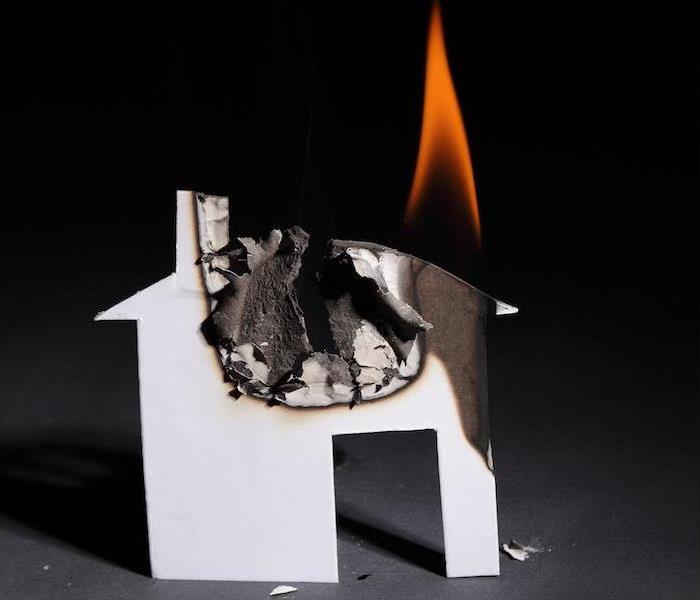All Fires Need 4 Components
1/21/2022 (Permalink)
 If your home or business has any damage, SERVPRO of NW & SE Dutchess is ready around the clock to help you recover.
If your home or business has any damage, SERVPRO of NW & SE Dutchess is ready around the clock to help you recover.
If we were to ask you right now what a tetrahedron is, could you answer without hesitation? Hey, we’re not judging, we might have to look it up, too!
Let us save you some time, though—it’s a three-dimensional, triangular shape with four equal sides.
Now that you know what a tetrahedron is, you should also know what it has to do with fire safety! There is something called a fire tetrahedron, which is a fancy way of saying that all fires need four components to survive. Without these elements working together, a fire can’t start.
Fuel. Fire has to have something to give it fuel. These are things that can easily be burned, such as wood, plastics, and other inorganic and organic materials.
Heat. Obviously, fire produces heat, and that heat will vary for each item. All objects have a threshold for heat, and at that point, the object will either ignite, melt or combust.
Oxygen. Oxygen helps feed life into everything, including fires! It is needed in order to produce an expanding series of chemical reactions. In short, oxygen feeds a fire so it can grow, generating products of combustion (like smoke and carbon monoxide) in the process.
Chemical Chain Reaction. Fuel, heat and oxygen all help produce a chemical reaction—and this cycle is what feeds a fire. As long as the chain reaction isn’t disturbed, the fire will continue to burn.
Cool it. Common sense says putting a fire out requires the opposite of heat, which is something to help cool it. Your goal is to find a way to exhaust the heat. You can do this by dousing a fire with water in many cases, but it’s important to understand that water can evaporate or even boil, so a lot of water may be needed.
Smother it. Instead of giving fire oxygen, you will need to somehow remove the oxygen to help put a fire out. By smothering a fire, you are starving it of the oxygen it needs in order to keep thriving. This is the principle behind “stop, drop and roll.”
Starve it. A fire can feed off of things like wood, grass, or other dry materials, and as long as it can find these items, the fire will continue to roar. If it can’t find these items, or you have removed these fueling agents out of the line of fire, you can help it come to a natural end.
Interrupt the chain reaction. Essentially, you have to find a way to interrupt the chain reaction. There are chemical agents like halon that are very effective in doing this. But halon has an elevated potential for ozone depletion, which makes it an environmental threat.
If the fire tetrahedron makes a wreck of your home or business, we’re ready around the clock to help you recover. Contact SERVPRO anytime for fast, thorough cleanup and recovery after a fire.






 24/7 Emergency Service
24/7 Emergency Service